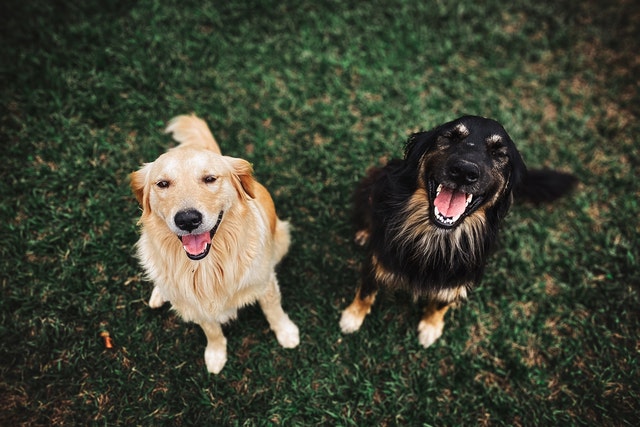
Scent Dogs Detect Coronavirus
Science -- May 21, 2022: Scent detecting canines can be taught to identify individuals with a coronavirus infection from skin swabs, according to a recent study from the University of Helsinki.
The canines' accuracy in recognizing the samples was 92 percent in the experimental set-up at Finland's Helsinki-Vantaa International Airport. Scent detecting dogs may be taught to identify people with coronavirus infections from skin swabs, according to a recent study by the University of Helsinki and Helsinki University Hospital. The canines' accuracy in recognizing the samples was 92 percent in the experimental set-up at Finland's Helsinki-Vantaa International Airport.
The quick and precise identification and isolation of patients infected with the coronavirus is critical to worldwide pandemic management. Coronavirus infection is currently diagnosed with a PCR test that reliably and sensitively distinguishes coronavirus from other infections. However, because of their sluggish findings and high cost, PCR assays are unsuitable for screening large groups of people.
Researchers from the University of Helsinki's Faculties of Veterinary Medicine and Medicine, as well as Helsinki University Hospital, collaborated to create a triple-blind, randomized, controlled study to test the accuracy of trained scent detection dogs, in which none of the three participants — dog, dog handler, and researcher — knew which of the sniffed skin swab samples were positive and which were negative. The study also looked into elements that could affect the canines' ability to recognize a positive sample.
The three-part study was recently published in the BMJ Global Health journal. The work adds to our understanding of the employment of scent dogs in pandemic response.
Over 90% of samples were correctly identified, with just minor variances in accuracy amongst dogs.
The dogs were taught to distinguish between skin swab samples from coronavirus patients and those from volunteers who tested negative in the first part of the trial. The canines were relocated from the training center to Helsinki-Vantaa Airport for the following parts of the investigation after a few weeks of training.
Four trained canines completed a validation test to establish their discriminatory abilities in the study's second phase. During the trial, each dog was exposed to 420 samples over the course of seven days. Because each sample donor provided many parallel samples, each dog was given an identical set of 114 coronavirus patient samples and 306 control samples to sniff. PCR had validated the coronavirus status of all sample donors. The dog sniffed 20 sample tracks with three samples each on each testing day, with the tracks given in random order.
The dogs successfully identified the samples 92% of the time. Their specificity was 91 percent, while their sensitivity for detecting a positive coronavirus sample was 92 percent. There were very minor variances in accuracy between the four canines. The coronavirus infection generated by virus variations was the single most important factor in the dogs' incorrect identification.
The findings back up previous claims that scent dogs may detect people infected with the coronavirus.
"Our study set-up was of a high scientific standard. The sample sizes were sufficiently large, and all dogs sniffed an identical set of samples, allowing comparison of their performances. The dogs also had to successfully indicate sample sets containing only negative samples -- an important trait when screening individuals. Another significant advantage was that samples were collected from outpatients instead of hospital patients. In addition, the testing was performed under real-life conditions rather than in a laboratory," says the leader of the DogRisk research group and docent of clinical research in companion animals Anna Hielm-Björkman from the University of Helsinki.
"I was particularly impressed by the fact that dogs performed worse with samples we had collected from patients suffering from a disease caused by a coronavirus variant. The explanation is simple: the dogs had originally been trained with the initial wild-type virus, and thus they did not always identify the variant samples as positive. This reveals their incredible ability of discrimination," says Anu Kantele, Professor of Infectious Diseases and Chief Physician at the University of Helsinki and Helsinki University Hospital.
Scent dogs provide invaluable assistance at airports and ports.
The study's final step involved checking passengers and employees at Helsinki-Vantaa Airport in a real-world setting. 98.7% of the negative samples were accurately detected by the scent dogs. Because there were so few coronavirus-positive samples in real-life testing, it was impossible to analyze the dogs' performance with positive samples. However, the performance on the correctly detected positive samples was also evaluated at 98.7%, based on positive 'work motivation samples' frequently supplied to the dogs during this section of the study. Work motivation samples are naive samples that have not been scented by dogs before being taken from PCR positive patients. They are given to the dogs at regular intervals to keep their interest in the target smell when the proportion of positive samples is otherwise very low.
Cite This Page:
MLA
APA
Chicago
University of Helsinki. "Scent dogs detect coronavirus reliably from skin swabs." ScienceDaily. ScienceDaily, 17 May 2022.
Wnctimes by Marjorie Farrington


 How to resolve AdBlock issue?
How to resolve AdBlock issue? 